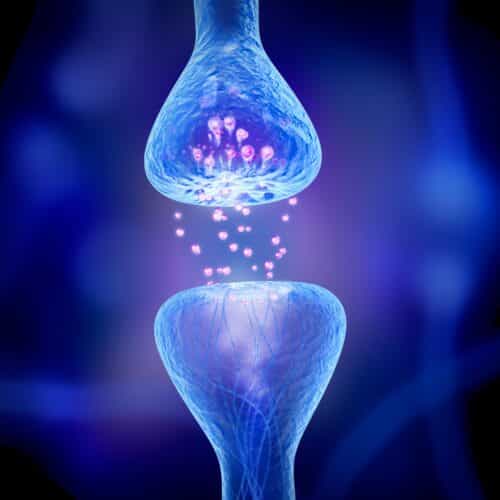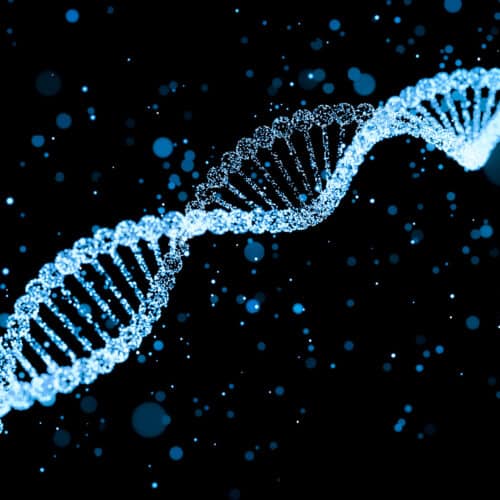The science behind Parkinson’s
Finding a cure – our major research targets to slow, stop or reverse Parkinson’s:

Mitochondrial dysfunction
Mitochondria are like ‘battery packs’ inside our cells. Dopamine producing nerve cells (or neurons) in the brain need a lot of energy to do their job – but mitochondria don’t seem to function well in Parkinson’s which may starve the neurons of energy and lead to their death. Mitochondria are also involved in triggering cell self-destruction, which may be another cause of neuron loss in Parkinson’s. Through our International Linked Clinical Trials programme (iLCT), Cure Parkinson’s has prioritised compounds that have the potential to restore vital mitochondrial function, enhancing energy production in dopamine neurons. One such clinical trial is looking to repurpose UDCA, a treatment for liver disease, targeting mitochondrial dysfunction in Parkinson’s.
UDCA and Parkinson’s
Waste removal
In Parkinson’s, the neurons’ normal processes for discarding waste may be faulty allowing substances to build up and become toxic, such as the protein alpha-synuclein. Methods of restoring the proper biological waste disposal pathways in cells are currently of great research interest. GCase is an enzyme that helps to break down proteins ready for proper cellular disposal. GCase is encoded by a region of DNA called the GBA-1 gene. However, around 10% of people with Parkinson’s carry a fault in this GBA-1 gene, and it is thought this is the cause of their Parkinson’s. Cure Parkinson’s has funded a successful phase 2 clinical trial of a drug called ambroxol, which is thought to increase levels of GCase in cells, thereby improving proper cellular waste disposal. We are now looking to drive this research towards the next phase of clinical development.
Ambroxol and Parkinson’s
Alpha-synuclein accumulation
Alpha-synuclein is a protein which is abundant in dopamine producing nerve cells; it is especially concentrated in the brain, while smaller amounts are found in the heart, muscle and other tissues. In Parkinson’s however, alpha-synuclein mis-folds and aggregates into clumps called Lewy Bodies. It’s thought these may be toxic and the clumps of alpha-synuclein get passed from one neuron to another, possibly causing the spread of the disease through the brain. Cure Parkinson’s is supporting research and clinical trials which are targeting alpha-synuclein aggregation.
Read more: alpha-synuclein and Parkinson’s
Inflammation
In Parkinson’s, as with many long-term illnesses, we find chronic inflammation in tissues. Inflammation is an important part of our bodies’ immune defences, but when it is sustained it can cause many damaging effects. In Parkinson’s, inflammation in the brain may contribute to over-production of a toxic form of the protein alpha-synuclein. Chronic low-level inflammation in Parkinson’s is aided by a complex of proteins known as the inflammasome. Researchers have proposed reducing inflammation in Parkinson’s as a means of potentially slowing the progression of the condition. Cure Parkinson’s is currently supporting studies evaluating the anti-inflammatory effects of certain drugs for Parkinson’s.
Read more: Inflammation and Parkinson’s
Oxidative stress
Mitochondrial dysfunction also contributes to high levels of very volatile molecules (known as reactive oxygen species) found within dopamine neurons in Parkinson’s. These react with, and damage, their surroundings. They may also contribute to the aggregation of alpha-synuclein. High levels of free and reactive iron molecules are believed to be a source of oxidative stress in dopamine neurons. Iron chelating (removal) medicines, which are used to treat people with certain blood disorders, are also being studied as potential treatments for Parkinson’s.
Iron chelation and Parkinson’sOther important research areas
As previously discussed, no two cases of Parkinson’s are the same and as a result, the treatment needs of each individual will be different. This is termed a multi-modal approach.
Looking ahead, once a drug or a treatment has been determined to stop or slow the progression of Parkinson’s, neurons will require ‘neuroprotection’ and this is another important area of Parkinson’s research. Other strategies aim to nourish and protect dopamine neurons by introducing neurotrophic factors.
Of further research interest is dopamine cell replacement therapy, which seeks to introduce healthy functioning dopamine neurons deep into the brain to replace those neurons lost to the disease.

Neuroprotection
Exenatide is a Glucagon like peptide-1 receptor (or GLP-1R) agonist. This is a class of drug that has traditionally been used for treating diabetes, but has recently been repurposed in a clinical trial for Parkinson’s after multiple studies suggested neuroprotective effects in laboratory models of Parkinson’s. A number of research studies have been developed to test diabetes medicines in Parkinson’s.
Diabetes and Parkinson’s
Nerve growth (neurotrophic) factors
Another area of neuroprotection is that of nerve growth (or neurotrophic) factors. These are supportive nurturing proteins that the brain produces naturally and they play important roles in both the development of neurons and neuron survival. There are many types of neurotrophic factors which support different neurons in a variety of ways.
Nerve growth factors for Parkinson’s
Neuron replacement (or cell-replacement) therapy
Another avenue of great interest is cell-replacement therapy; introducing functional healthy dopamine neurons deep into the brain. Cure Parkinson’s is supporting TRANSEURO, a Europe-wide trial testing dopamine cell-replacement therapies with foetal-derived dopamine neurons in people with Parkinson’s. Other trials are underway around the world using dopamine neurons grown from stem cells.
Cell replacement therapy for Parkinson’sPrecision medicine
PD FRONTLINE
As research reveals the complex biology that underlies Parkinson’s, it’s clear that a ‘one size fits all’ approach to curing the condition is unlikely to be successful. That’s why there’s increasing care to develop therapies and design clinical trials towards sub-types of Parkinson’s.
Find out more
The sub-types of Parkinson’s
This is called ‘stratification’, and one way to stratify people with Parkinson’s is according to gene variations that may have contributed to their disease. For instance, those with mutations in the GBA-1 gene may benefit the most from therapies aimed at boosting cellular waste disposal. The PD Frontline study offers genetic testing for people with Parkinson’s to help people understand their condition a little more, and build clinically ‘trial-ready’ groups of people whose Parkinson’s is likely to have similar underlying biochemistry.
Elsewhere, several research groups are testing immunotherapies (or vaccines) against the Parkinson’s hallmark protein alpha-synuclein. Immunotherapy is a method of directing our immune system to mount defences against specific pathogens or rogue proteins such as the mis-folded alpha-synuclein protein which is a common biological feature of Parkinson’s. Clinical trials of potential vaccines against alpha-synuclein are underway.








